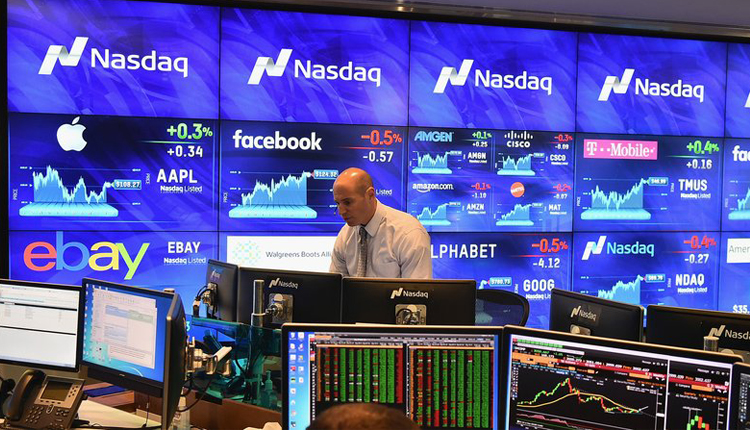U.S. stocks rose on Monday as strong manufacturing data out of U.S. and China eased concerns of a possible global economic slowdown. The Dow Jones Industrial Average rose 329.74 points to 26,258.42, led by an increase in United Technologies, Caterpillar, and J.P. Morgan Chase. Monday’s session also marked the Dow’s first close above 26,000 since February 26.
The S&P 500 climbed 1.2 percent to 2,867.19 as the financials sector outperformed. The Nasdaq Composite closed 1.3 percent higher at 7,828.91 on gains from Facebook, Amazon, Netflix and Alphabet.
“The momentum is still positive and we’re constantly drifting higher,” said Michael Katz, partner at Seven Points Capital. “Barring any bad news, that’s going to be the case until we do get some sort of bigger piece of macro news.”
Bank stocks rose broadly. Citigroup, Goldman Sachs, Morgan Stanley, Bank of America and J.P. Morgan Chase all closed at least 2.5 percent higher. The SPDR S&P Bank ETF (KBE) jumped 2.8 percent as yield rose.
U.S. manufacturing activity expanded last month, rebounding from its lowest level since late 2016, according to data from the Institute for Supply Management. The Dow and S&P 500 jumped to their highs of the day on the data.
In China, the Caixin/Markit Manufacturing Purchasing Managers’ Index jumped to 50.8 in March — its highest level in eight months — after economists polled by Refinitiv expected a print of 49.9. A number above 50 indicates expansion; a number below 50 shows contraction.
“But these positive developments mentioned above do not mean all risks have been resolved. A US-China trade deal has not yet been finalized and could still falter,” said Adrian Zuercher, head of APAC asset allocation at UBS Global Wealth Management’s Chief Investment Office.
“China’s government stimulus, while supportive, won’t be of the magnitude of 2009 or 2015. The China earnings downgrade cycle, while slowing, is not yet complete.”
Asian equities rose broadly on the data, with the Shanghai Composite surging 2.6 percent. Japan’s Nikkei 225 and South Korea’s Kospi indexes both rose more than 1 percent overnight. European stocks also climbed. The Stoxx 600 index closed 1.2 percent higher.
The figures gave some much-needed relief to investors unnerved of late by fears of a global economic downturn. Early last week, equities came under pressure as bond markets indicated an impending U.S. recession.
The yield on the 10-year Treasury note recently dipped below that of the 3-month bill, in what’s known as a yield curve inversion. A yield curve inversion is seen as a trusted predictor of a recession. The spread widened on Monday, as the 10-year rose to 2.49 percent.
“The cycle is extended, and the inverted curve has made us even more alert for trouble in the economy and financial markets, but we do not think trouble is imminent,” Doug Peta, chief U.S. investment strategist at BCA Research, said in a note.
“We are not dismissing the inverted yield curve, but our other recession-indicator inputs are not confirming its warning. Given the Fed’s new guidance, we expect that the next recession will not arrive before mid-to-late 2020.”
Monday’s gains came after the S&P 500 notched last week its best start to a year since 1998 and its strongest quarterly performance since 2009. The broad index gained 13.1 percent in the first quarter, led by the technology sector.
In other news boosting markets, the U.S. and China recently concluded their latest round of trade talks. U.S. officials last week said China had made proposals on a number of issues — including forced technology transfers — that go further than previous commitments.
The two superpowers are set to resume talks in Washington this week. Both countries have targeted billions of dollars’ worth of each other’s goods with tariffs in their protracted trade dispute.
Amazon rose more than 1.5 percent after analyst at Oppenheimer hiked his price target on the stock to $2,085 from $1,975, citing AI and cloud adoption.
Source: CNBC



